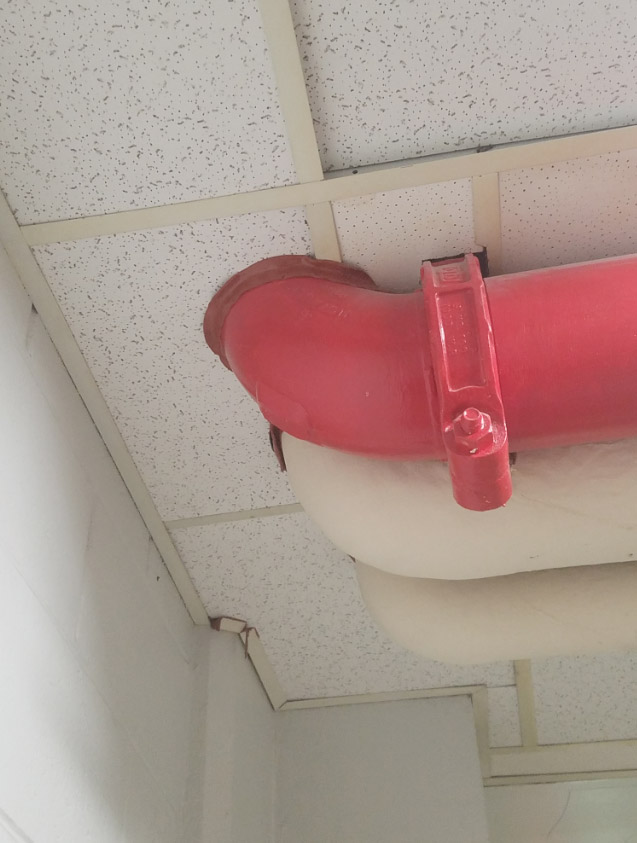Spot The Deficiency
You are the inspector. Spot the deficiencies in these pictures. There may be multiple deficiencies in the same picture. Answers are provided at the bottom of the page.
1.

2.

3.

Answers:
1. There is a gap around ceiling penetrations that are not sealed. In the opinion of some inspectors, this would allow smoke and heat to escape and would slow the response of any sprinkler or smoke detector in the space. The "code logic" below would be followed. Additionally, while the penetrations need to be sealed, they do not need to be fire stopped. Installing fire stop where it is not needed is an indicator of lack of knowledge of the appropriate uses and applications of fire stop.
CODE REFERENCE: NFPA 13-2010, 6.1.1.2 "All materials and devices essential to successful system operation shall be listed."
Openings in the ceilings above a sprinkler would allow heat to escape and lengthen the response time for the sprinkler to activate. They do not duplicate the tight ceiling condition that was used during the sprinkler listing certification test. Therefore, the sprinklers are not installed per its listing installation instructions.
NFPA 13 Handbook "Throughout the life of the building, care should be taken to ensure that the integrity of the protective membrane materials remain intact - that is, no through-penetrations and no removal of materials, except at the sprinkler locations."
2. Fire proofing is missing on the structural steel beam and a beam clamp.
CODE REFERENCE: NFPA 220-2012, 5.3.1 "Structural elements required to have a fire resistance rating and that support more than two floors, one floor and a roof, a bearing wall, or a nonbearing wall more than two stories high, shall be individually protected on all sides for their full length with materials providing the required fire resistance rating."
3. The fire stop material is painted. This may void the rating of the fire stop if permission to paint the fire stop is not granted in the listing document.
The fire stop material appears to be installed on the surface of the wall. This may indicate that it is not pushed into the annular gap.
The listing document for the fire stopping system being used must permit an insulated pipe and a sleeve to be in the same annular gap.
CODE REFERENCE: NFPA 101-2012, 8.3.5.1 "Penetrations for cables, cable trays, conduits, pipes, tubes, combustion vents and exhaust vents, wires, and similar items to accommodate electrical, mechanical, plumbing, and communication systems that pass through a wall, floor, or floor/ceiling assembly constructed as a fire barrier shall be protected by a firestop system or device. The firestop system or device shall be tested in accordance with ASTM E 814 or ANSI/UL 1479.
